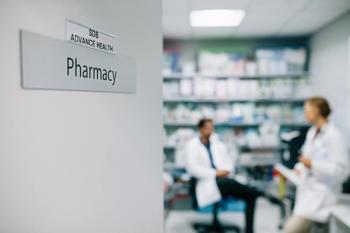
4 Things to Know Before You Become an Emergency Medicine Pharmacist
Each year, more pharmacists take on new roles in the emergency department.
Simple math can tell you that the number of emergency departments vastly exceeds the number of emergency medicine pharmacy residencies.
Nevertheless, there are many pharmacists doing great things without specialty residency experience, and each year, more pharmacists take on new roles in the emergency department.
If you want to be one of those pharmacists, or you know someone who does, here are 4 things to know about this unique practice setting:
1. The bibles of emergency medicine
Fundamental learning usually takes place in textbooks. In emergency medicine, 2 core text books cover almost every conceivable disease encountered in the emergency department: Rosen’s Emergency Medicine: Concepts and Clinical Practice and Tintinalli’s Emergency Medicine Manual. Some endearingly refer to the 2 as “Rosenalli’s.”
These textbooks provide great insight, but it may not be practical to sit down and read them cover-to-cover. Taking the approach of a long-term project by reviewing core content when encountering cases in emergency department adventures is a better approach.
Luckily, many emergency department staffers around the world (myself included) are huge geeks when it comes to emergency medicine, and we all love to share our learning experiences online. Tapping into this resource can be an excellent complement to reading “Rosenalli’s.” That resource is…
2. FOAMed
Free Open Access Medical Education (FOAMed) is a concept that aims to provide medical education to anyone, anywhere, anytime. Ever since the term was coined in 2012, it has become so much more than that.
Hundreds of blogs, podcasts, vodcasts, and several social media platforms use the moniker #FOAMed to create, share, acquire, and discuss anything and everything related to emergency medicine. When someone asks for “push dose pressors,” it’s because of #FOAMed.
Whether or not you agree with this platform, it is critical to be in the loop through this form of media because many new, cutting-edge therapies are first discussed here. On the flip side, knowing when to step in as a medication safety expert and balance the scales with counterpoints to any pharmacotherapy discussed is as essential in #FOAMed as in your daily practice.
3. Specified professional networking groups
Both the American Society of Health-System Pharmacists and the American College of Clinical Pharmacy have specialty practice groups focused on emergency medicine. Here, you can network with local, regional, national, and international pharmacists for research, knowledge, or just professional comradery.
Join us. We’re all friendly!
4. How to stay healthy
The emergency department is one of the most stressful places in the hospital. In no other department are you more directly involved with patients and their families who are at the worst moments of their lives and depending on you to maintain your professionalism and do your job.
This can take its toll on your mental health, on top of the physical demands of the job.
Maintaining a regular routine of exercise and proper diet can help the physical side, but it is critical to take care of the mental aspects, as well. Ask to see if the hospital or department offers resources for counseling or sharing experiences.
During my residency, the emergency department pharmacy team had a mandatory coffee break at 2:30 PM sharp every day. At first, I thought I should just keep working through and I’d be fine, but taking a short break to decompress and talk to peers allowed me to regain the energy and mental toughness to finish the shift.
It may not work for everyone, but I still take the same break every day.
Newsletter
Stay informed on drug updates, treatment guidelines, and pharmacy practice trends—subscribe to Pharmacy Times for weekly clinical insights.




















































































































































































































